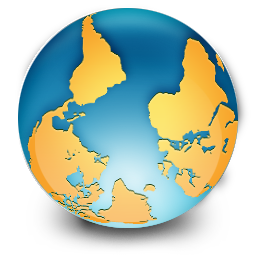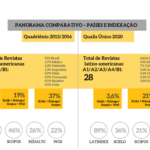 Recent indications show that the predominance of the USA in science and technology is beginning to lose ground to emerging economies, particularly in Asia. A report produced by the National Science Board (NSB) and entitled “Science and Engineering Indicators 2014¹” shows that American dominance is losing momentum. This is due in part to the cuts in federal funding for research and development (R&D) which were driven by the economic crisis which began in 2008. The NSB is in charge of the “National Science Foundation” which is financed by the federal government, and provides a body of advisors to the President and the US Congress on policy matters related to science and technology.
Recent indications show that the predominance of the USA in science and technology is beginning to lose ground to emerging economies, particularly in Asia. A report produced by the National Science Board (NSB) and entitled “Science and Engineering Indicators 2014¹” shows that American dominance is losing momentum. This is due in part to the cuts in federal funding for research and development (R&D) which were driven by the economic crisis which began in 2008. The NSB is in charge of the “National Science Foundation” which is financed by the federal government, and provides a body of advisors to the President and the US Congress on policy matters related to science and technology.
This topic was the subject of editorial comment in the 13th February 2014 edition of The “New York Times²”. In spite of the reduction from 37% to 30% in 2011 in the global investment in research from the previous decade, the USA remains a powerful force in science and technology, particularly in high-tech industries, energy and the pharmaceutical sector. These sectors make up around 40% of the American economy, more than any other developed nation. In the USA, the high-tech sector weathered the financial crisis better than the European Union and Japan. The USA is still the greatest investor in R&D, investing around 429 billion dollars annually, compared to China with 208 billion dollars and Japan with 147 billion dollars.
Nevertheless, over the last few decades, many developing nations, especially in Asia, such as China, South Korea, Taiwan and Singapore have been making massive investments in science and engineering as well as in high-tech and knowledge-based industries. The proportion of global investment in research corresponding to Asian nations went up from 25% in the last decade to 34% in 2011. This translated into an increase in technologically advanced products, and an increase in investment in R&D in many countries.
As a consequence of this, China recorded an impressive increase in scientific output, measured by the number of publications produced. It was closely followed by South Korea, Japan and Singapore. The average increase in the number of publications generated by these countries was around 6 – 9% per annum. These countries also invest in a high standard of education since they are determined to narrow the gap that separates them from the developed nations in terms of economic and technological development. China, with a per capita income comparable with other developing countries, stands out as being the only nation to have a global presence in high-tech economic activity and R&D comparable with the developed countries.
The economic growth of other countries such as Brazil, Turkey, India and South Africa is also contributing to the shift in the Europe – USA axis in the production of high-tech goods, which is also associated with the growth in scientific output and R&D.
While the economies based on technologically advanced products are growing, the competition with the traditional investment targets such as Europe, Canada and Japan is becoming intense. Multi-national companies note the advantages in investing and manufacturing their products in countries whose economies in technology are growing, such as Brazil, Israel, China and India. The report of the NSB shows that investments by subsidiaries with foreign majority shareholders tripled in India and doubled in Brazil between 2007 and 2010.
Scientific output
The publication of research results in peer review journals is a safe and simple indicator for measuring research output. In this field, the USA remains the world leader in the number of publications registered in Thomson Reuters “Science Citation Index and Social Science Citation Index”, with 26% of the world’s total of 828,000 articles published in 2011. Nevertheless, this percentage has been decreasing slowly, falling by 4 percentage points between 2001 and 2011. This decrease is probably due to the increase in the proportion of articles coming from East and Southeast Asia, and also from Brazil and India. The number of publications from China in peer review journals had the largest increase among the developing countries during the same period, going from 3% to 11% of the world total.
Data on citations to these articles, which measure quality and impact, contained in the NSB report indicate that between 2002 and 2012 the percentage of articles with American authors in the 1% of the world’s most cited articles ranged between 1.6 and 1.8%. Countries of the European Union, however, became more influential, increasing their share of the 1% of the world’s most cited articles in the period 2002 to 2012 from 0.7% to 0.9%. China grew its participation in the share of the 1% of the world’s most cited articles in that same period from 0.1% to 0.6%
Other indicators
The NSB report of 2014 points to other sectors in which the USA is losing ground to developing economies, such as investments in sources of renewable energy, new fuels and research in biomedicine. Some areas even fear a brain drain. A study undertaken by the “American Society for Biochemistry and Molecular Biology³” revealed that one in five researchers considered leaving the country in search of better career opportunities, and 85% of them stated that reduced federal investment in R&D “has allowed our global competitors to catch up to and even pass the U.S. in scientific research.
Conclusion
The more countries in the world that develop technological capabilities and human capital in R&D to support an economy based on this knowledge, with obvious benefits for these nations, the less dominant will be the participation of the USA in the global arena of science and technology. In contrast, in developing countries, primarily in Asia but also in other parts of the world, a growth in the economies based on science and technology was observed. This makes them better positioned to face the technological dominance of the developed countries. The emphasis on high quality education in these countries ensures the skills of their labor forces which is necessary to sustain their development.
Notes
¹ National Science Board. Science and Engineering Indicators 2014. Arlington VA: National Science Foundation (NSB 14-01). 2014. Available from: <http://www.nsf.gov/statistics/seind14/?org=NSF>.
² LOWREY, A. U.S. Dominance in Science Faces Asian Challenge. The New York Times. Feb 13, 2014. Available from: <http://www.nytimes.com/2014/02/14/us/us-dominance-in-science-faces-asian-challenge.html?_r=0>.
³ American Society for Biochemistry and Molecular Biology – http://www.asbmb.org/uploadedFiles/Advocacy/Events/UPVO Report.pdf
References
Lista de países que fazem parte da União Europeia usada no Relatório do National Science Board. Science and Engineering Indicators 2014. 2014. Available from: <http://www.nsf.gov/statistics/seind14/content/chapter-5/at05-24.pdf>.
 About Lilian Nassi-Calò
About Lilian Nassi-Calò
Lilian Nassi-Calò studied chemistry at Instituto de Química – USP, holds a doctorate in Biochemistry by the same institution and a post-doctorate as an Alexander von Humboldt fellow in Wuerzburg, Germany. After her studies, she was a professor and researcher at IQ-USP. She also worked as an industrial chemist and presently she is Coordinator of Scientific Communication at BIREME/PAHO/WHO and a collaborator of SciELO.
Translated from the original in Portuguese by Nicholas Cop Consulting.
Como citar este post [ISO 690/2010]:

















Recent Comments